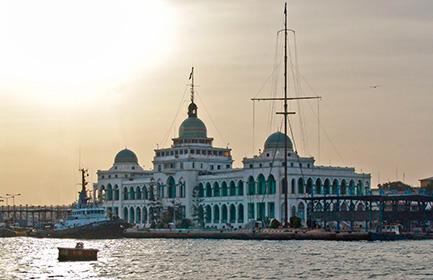
Weather today
jan
feb
mar
apr
may
jun
jul
aug
sep
oct
nov
dec
Wandering the shops
Founded at the start of the Canal excavations, by the late nineteenth century Port Said (Bur Said in Arabic) was an important port where all the major maritime powers had consulates.
Now it’s a port of call on your cruise of the Mediterranean Sea with MSC Cruises. On the southern side of the city centre, the area close to the Arsenal Basin is a good place to see some of Port Said’s dusty nineteenth-century European-style colonial houses, which although dilapidated remain wonderfully evocative. Sadly, with new constructions springing up constantly, these buildings may not be there much longer. The city centre’s principal thoroughfare, Sharia al-Gumhorriya reflects Port Said’s metamorphosis from salty entrepôt to slick commercial centre, with plate-glass facades superseding early 20th-century balconies as the street progresses north.
With an MSC Mediterranean cruise excursion, you can also visit Port Said’s bazaar, ranging from humble stalls on Salah al Din Street to smart boutiques on Sharia en-Nahda and at the junction between Sharia al-Gumhorriya and Sharia 23rd July. There’s another fine selection of old colonial buildings just east of Sharia al-Gumhorriya on Memphis Street – particularly the glorious old Woolworths store. Bounding the northern side of the centre is Port Said’s shell-strewn beach (loungers, parasols and windbreakers available to rent), backed by the city’s long Corniche, from where you can watch dozens of vessels at anchor in the Mediterranean waiting to go through the Canal.
At the eastern end of the Corniche is a massive sandstone plinth that bore a huge statue of Ferdinand de Lesseps – who provided the support necessary to build the Suez Canal – before it was torn down following the 1952 Revolution.

